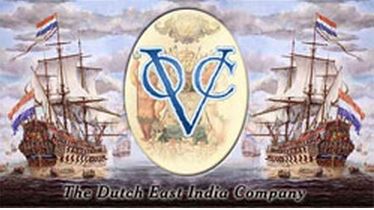An initial public offering (IPO), also known as a stock market launch, is when shares of a company become available for the public to buy – converting a private company into a public company.
A private company is not listed on a stock exchange, while a public company is.
Companies use an initial public offering as a means of raising capital. Sometimes, a business may decide to go public so that its employees, owners and early investors can liquidate money by selling their shares.
After going public, shares of a company are traded publicly in the financial marketplace – the company is not required to repay the capital to its public investors.
Most IPOs require an investment bank to act as the underwriter. The underwriter helps assess the value of shares and establishes an initial sales price.

There are advantages and disadvantages for a company going public. The process is expensive and requires the company to disclose all financial information. However, it is a very effective way of raising capital, expanding and improving public image.
Lexicon.ft.com defines an IPO as follows:
“IPO (initial public offering) is the first sale of a company’s shares to the public, leading to a stock market listing, known as a flotation in the UK. This is done by listing the shares on a stock exchange of the company’s choosing such as the London Stock Exchange.”
Carrying out an initial public offering
It is important to make sure you properly plan out the IPO.
According to International and U.S. IPO Planning – A Business Strategy Guide, these are the initial steps:
- Have an impressive management and professional team
- Expand the company’s business with the aim of going public
- Obtain audited or auditable financial statements using IPO-acceptable accounting principles
- Clean up the company’s act
- Establish antitakeover defenses
- Develop good corporate governance
- Create insider bail-out opportunities and take advantage of IPO windows
Pricing
The two main methods of pricing are:
- The fixed price method – The company’s lead managers fix a price.
- Analysis – A bookrunner analyzes confidential investor demand to properly evaluate share price.
Companies normally appoint a bookrunner (the lead underwriter) to help establish an initial share price.
Underpricing an IPO – according to Peter L. Karlis, companies sometimes “intentionally underprice IPOs as a rational behavior in order to induce the uninformed investors to participate in the market and thereby raise the demand for the issues.” However, underpricing an IPO can result in a loss of potential capital for the issuer.
Overpricing an IPO – this is a good way to gain more capital, but it is not risk free. By overpricing an IPO underwriters will have difficulty fulfilling their obligation to sell shares. Furthermore, if all shares are sold, there is a chance that the share price will plummet on the first day of trading, resulting in a loss of value.
The most efficient IPO pricing method is to establish an offering price that is low enough to attract interest, yet high enough to raise a decent amount of capital for the company.
The advantages and disadvantages of going public
Advantages:
When a company goes public, money is generated by new investors buying the newly issued shares, which goes directly to the company (primary offering). Additionally, early private investors may decide to sell some of their stake in the company (secondary offering). Therefore, an IPO is a lucrative way for a company to attract new investors who can provide capital for the company to accelerate growth.
In a nutshell many companies decide to go public because it allows them to quickly raise large amounts of capital.
- Cheaper access to capital
- Increased exposure
- Diversifying equity base
- Ability to retain better management
- More financing opportunities
- Facilitating acquisitions
Disadvantages:
One of the main disadvantages with an IPO is its complexity. A company should have a solid idea of its core business functions before deciding to start the process, which can be very time consuming.
- It is expensive
- A company is required to disclose all its financial information
- There is a risk that funding targets will not be met
- Loss of control (you have to answer to shareholders)
Largest IPO markets
In the past, the U.S. was the main issuer of IPOs. However, China is now the leading issuer of IPOs in terms of total value, according to an article in the Financial Times. In fact, China raised more than $73 billion up to the end of November 11 2011, which is more than double the amount that the NYSE and Nasdaq raised combined. In 2011, the Hong Kong Stock Exchange raised 30.9 billion, compared to a total of 30.7 billion in New York.
Largest IPOs in history
| Company | Year of IPO | Amount |
| The Alibaba Group | 2014 | $25 billion |
| Agricultural Bank of China | 2010 | $22.1 billion |
| Industrial and Commercial Bank of China | 2006 | $21.9 billion |
| American International Assurance | 2010 | $20.5 billion |
| Visa Inc. | 2008 | $19.7 billion |
| General Motors | 2010 | $18.15 billion |
| 2012 | $16 billion |
After an IPO, there is usually a window of opportunity after which the share price goes sky high. Investors who are able to act within that short time-frame can make huge huge profits.
